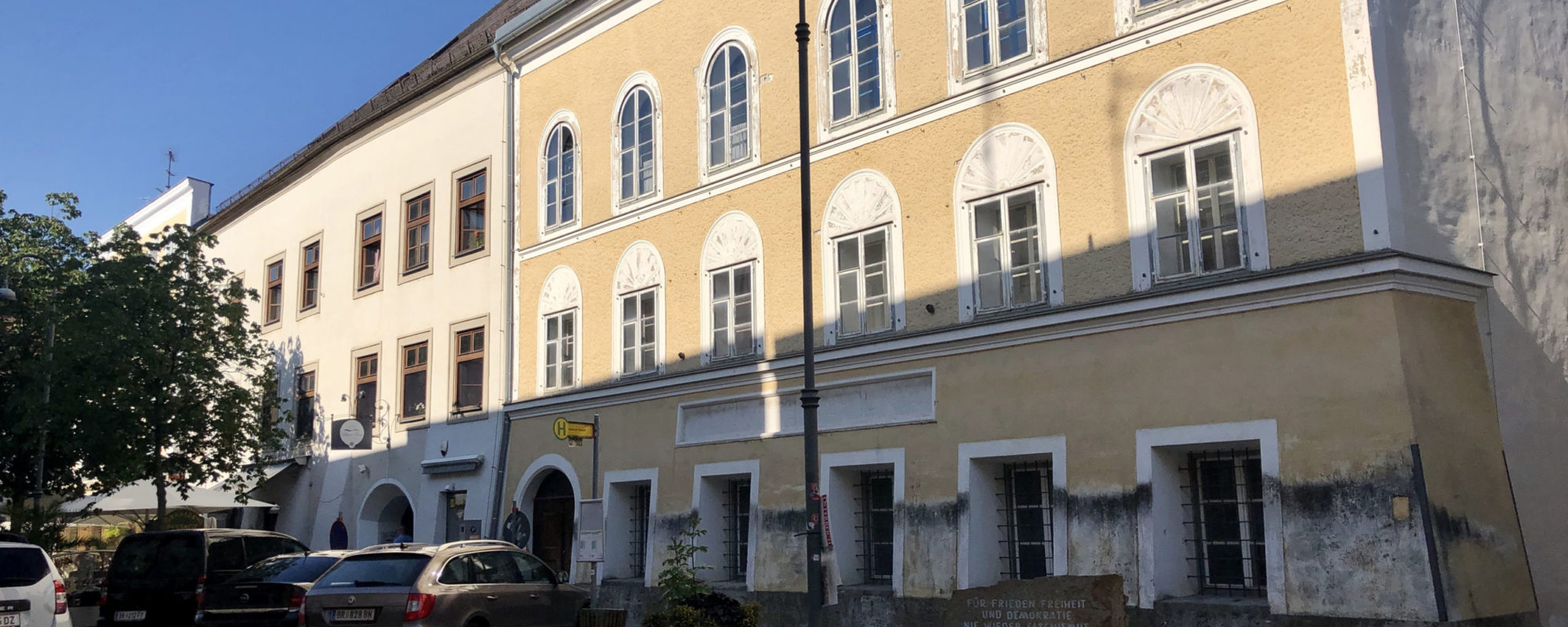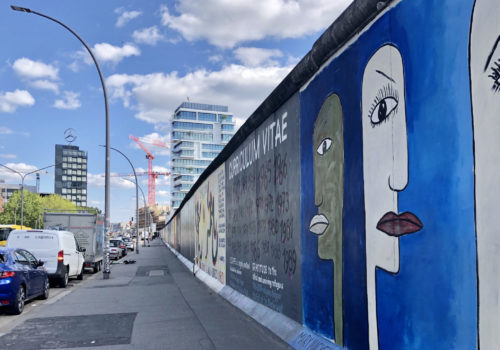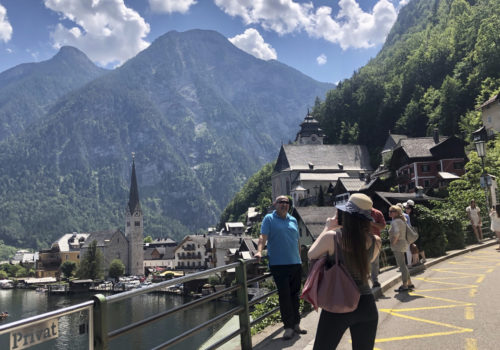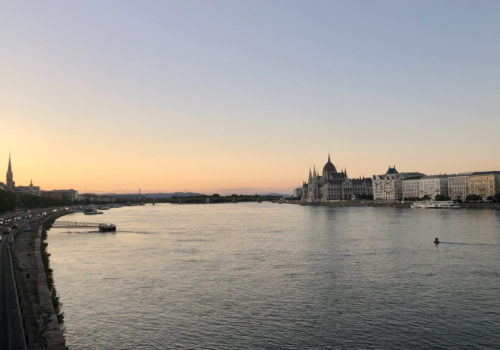BRAUNAU AM INN, Austria — On a warm, sunny morning in mid-August, a cyclist rode down Salzburger Vorstadt street in this city of 17,000 on the German-Austrian border. The street runs directly through the medieval old town, lined on both sides with colorful buildings, cafés and shops, and an old clock tower overlooking everything. As he passed number 15, a vacant, three-story yellow building, the cyclist slowed to a stop and considered the house for a moment. Snapping a quick photo, he got back on his bike and rode away.
I stood across the street with Florian Kotanko, a former history teacher and school principal. We, too, were on Salzburger Vorstadt that morning because of this house: It’s where Adolf Hitler was born in 1889. Although he left Braunau while still a toddler and showed little interest in the city as an adult, Braunau carries the historical and symbolic weight of his birthplace, and has long faced stigma over its connection to the Nazi dictator.
The building itself is unremarkable: Its windows are empty, the paint is faded and the lower level covered with mold from rainwater that drips down from the gutters. The only visible indication that the house is noteworthy is a memorial stone that stands in front, cut from stone at the Mauthausen concentration camp: “For peace, freedom and democracy—Never again fascism—Millions dead are a warning.” But small things hint at its history, if one knows where to look: Kotanko pointed out the small holes in the façade where Nazi flagpoles once stood, and the hooks for swastika-adorned garlands strung across the front during Nazi times.
“Often individual people come by: They look, take a photo, and continue on their way,” Kotanko said, gesturing to the cyclist. Although Austrian officials worry about the house serving as a pilgrimage site for neo-Nazis, Kotanko said people have an inherent curiosity about it regardless of political persuasion. “It’s the same as if I took a picture of a Catholic church: I wouldn’t automatically be called a Catholic,” he said. “Someone who looks at the house isn’t automatically a neo-Nazi.”
Kotanko, who picked me up at the Braunau train station earlier that morning sporting a tan hat and toting a wicker basket full of documents and articles about the town, is used to playing host to journalists like me. Retired from his job at the local school, he now acts as an unofficial city historian when people come to write about the house and the city. Especially since 2011, when the previous tenant—a care center for the disabled—moved out and left the house empty, its mere presence in Braunau and uncertain future have been a near-constant source of controversy.
It has intensified in recent months after the Austrian government announced the house will be renovated and turned into a police station. Earlier this summer, the Interior Ministry released the winning architectural proposal; officials also suggested the memorial stone in front of the house be moved to a museum in Vienna. Those decisions triggered intense criticism here in Braunau and Austria more broadly, suggesting the government is interested in downplaying the town’s history—and, as a result, reigniting debates about the extent to which the country has fully reckoned with its past.
There are no easy answers largely because the house is unique as far as Nazi-related sites go: It is a place where a baby was born and no crimes were planned or committed. If it was clear sites like Mauthausen should be turned into memorials, for example, along with the House of the Wannsee Conference in Berlin—where Hitler and his top officials planned the mass murder of Europe’s Jews—Hitler didn’t do much of anything in Braunau. Still, that the yellow house in Braunau is Hitler’s birthplace is something all the repurposing in the world ultimately can’t change.
“Renovating the house won’t make it disappear into thin air,” Kontanko said. “I’m okay with the decision to rebuild it, but it won’t change the fact that Braunau was the birthplace—and it won’t change the fact that people know where the birthplace was.”
* * *
The debate about what to do with the house is longstanding, each development opening another bout of national soul-searching, international media headlines and headaches for officials in Braunau. For years, the Austrian government paid thousands of euros per month in rent to Gerlinde Pommer, the house’s owner, then re-rented it to the city of Braunau to use for its own purposes. It has served multiple uses over the decades: bank, school, and most recently the disabled care center. The tenants, especially the latter, were relatively uncontroversial, enabling locals to feel the house was being put to good use.
But the building has been empty ever since 2011, when the disabled center moved out citing issues with the building’s structural suitability for its work. The Austrian government continued renting from Pommer, but when she indicated a few years ago that she might end the lease, officials decided to take more serious action. Moving in 2016 to expropriate the house for official government use, the government ultimately took over ownership and paid Pommer for the house (although an Austrian court ordered them last year to increase the amount to €1.5 million ($1.77 million).
There have been many suggestions for what should be done with it since then. Some argue it should be torn down, like Hitler’s bunker in Berlin; others advocate for some sort of social service to move back in, although the disabled center has said it’s not interested. Others believe such a place carries the responsibility to acknowledge its history in some significant way, either through education or a museum of some sort: One such concept, called the “House of Responsibility,” would bring young people from around the world to Braunau for extended fellowships focusing on peace and international cooperation.
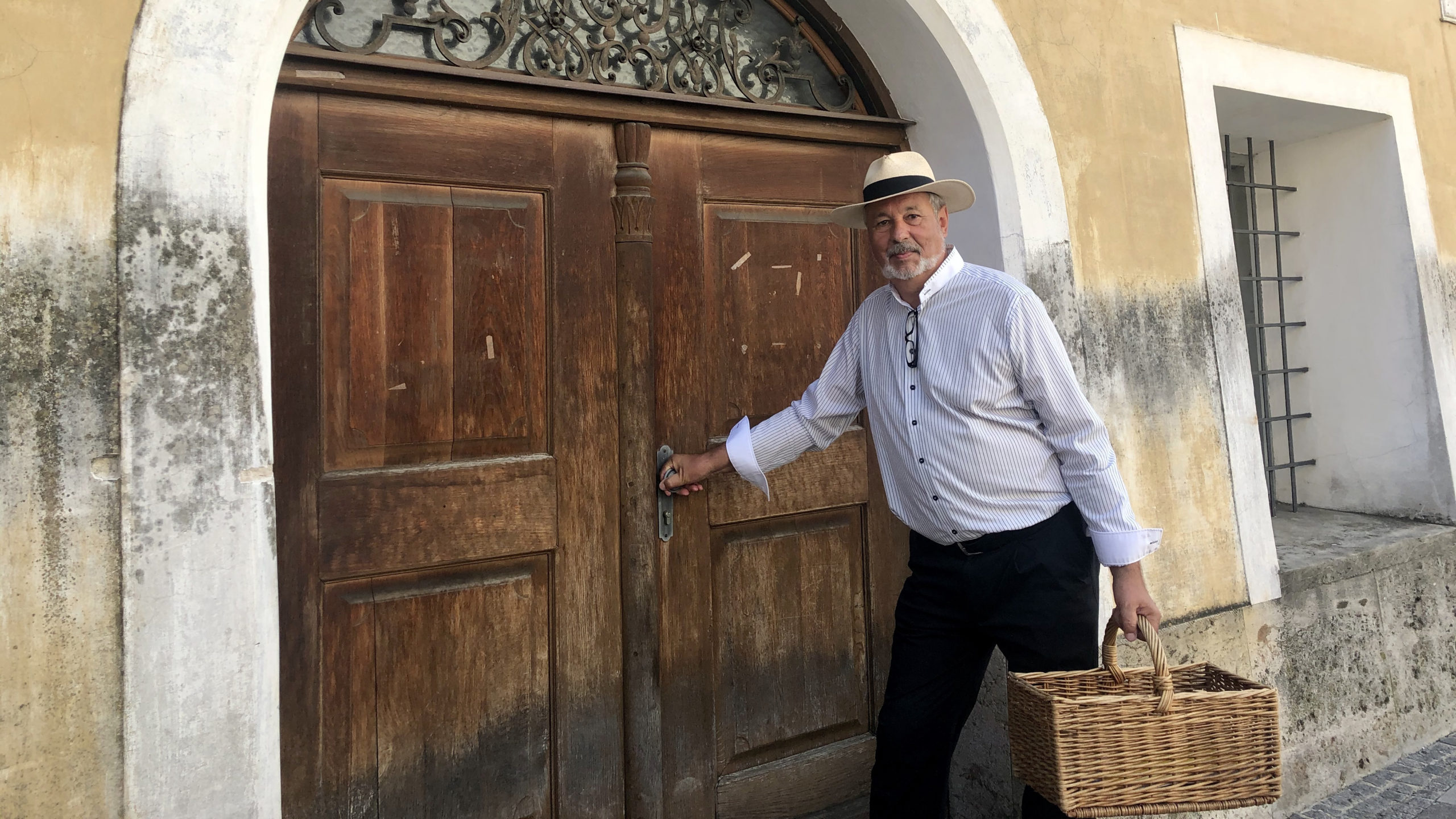
In 2016, the Interior Ministry inaugurated a commission of experts in various fields to provide recommendations for the house’s future use. Evaluating five potential options—a museum, some sort of social service, an educational space, a government administration building and simply tearing the house down entirely—commission members concluded something “life-affirming,” such as social services or administration, would serve best. What’s more, they urged the removal of anything referring directly to Hitler in order to remove its allure as a pilgrimage site for neo-Nazis. A “profound architectural remodeling” would “deprive the building of its recognizability and therefore its symbolic power,” they wrote.
The commission did agree that the house’s role as a “selfie point” for neo-Nazis “needs to end,” said Oliver Rathkolb, a member of the commission and a professor of modern history at the University of Vienna. “We were all in agreement that you can no longer play with this birthplace mythology—Hitler was only here for a few months as a small child.”
That concept of removing its “mythology” has been central to the government’s strategy. It’s present in the planned renovations, which would completely change the facade; to the suggestion that the police as the “guardians of freedom and fundamental rights” are best suited to prevent neo-Nazis from showing up; to the idea that the current memorial stone should be moved elsewhere in the city or have more context added.
It’s understandable that the government would want to discourage neo-Nazis from flocking to Braunau, and that a “life-affirming” use of the building makes sense given the death and destruction its famous former resident caused across Europe. But then-Interior Minister Karl Nehammer and section leader Hermann Feiner took that philosophy a bit further, explicitly stating that the goal is to “neutralize” the history of the house—a phrase that’s been at the center of the reason some are unhappy with the government’s plans.
* * *
That phrase, to “neutralize,” struck a major nerve in Braunau and across Austria because it touches deeper debates about the extent to which the country has fully confronted its culpability for Nazi crimes. For decades after the end of World War II, the official line was that Austria was the first victim of Nazi aggression: Hitler marched in and took over in 1938, and Austrians were unable to stop him.
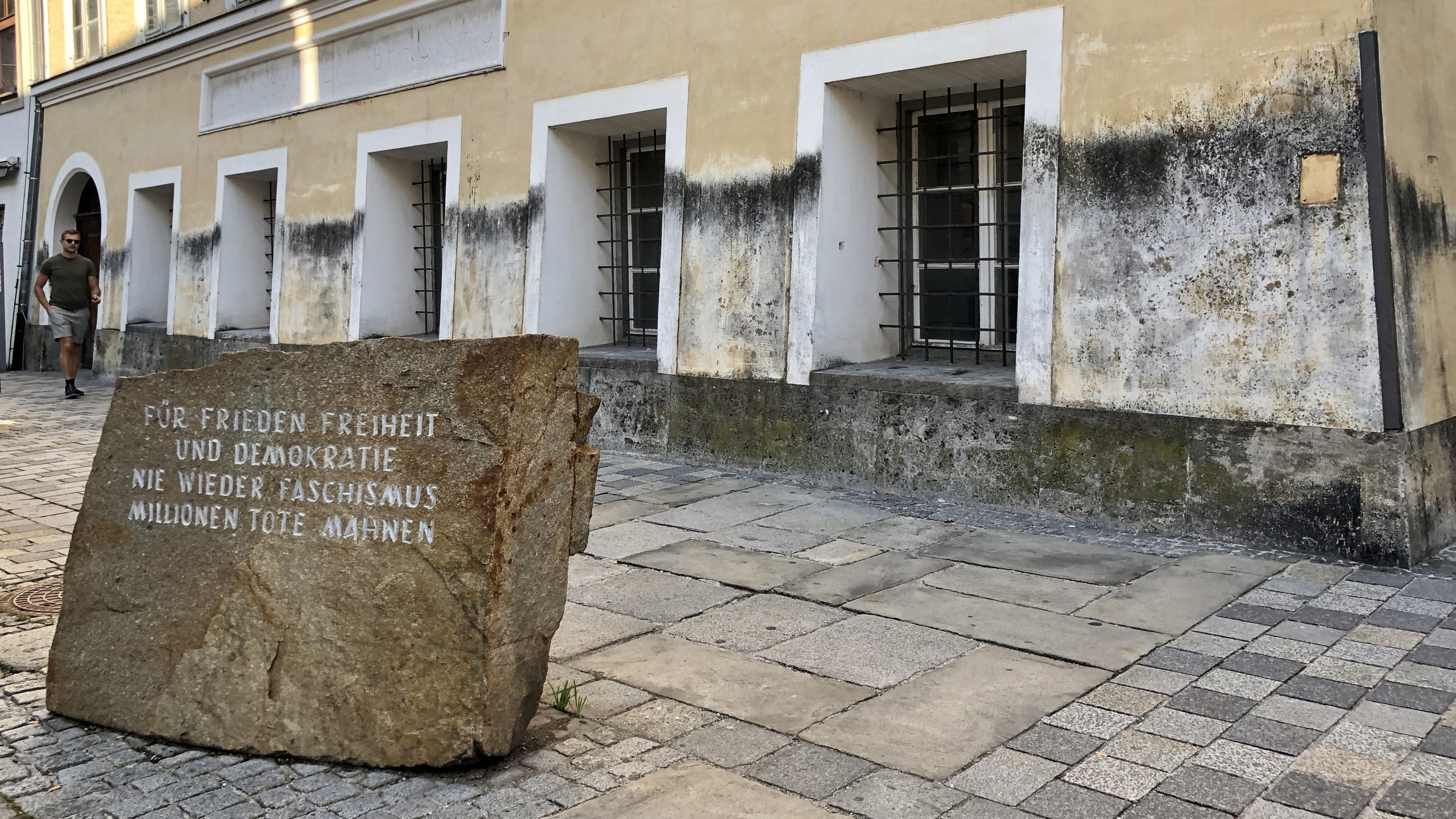
That version of history leaves out that many Austrians supported Hitler and wanted to be part of the Reich; many were active members of the Nazi party, and many fought in the German Wehrmacht during World War II. However, unlike in Germany, where the 1968 student revolution led to the creation of a comprehensive memory culture and an end to the silence about Nazi responsibility, Austria stuck to its combination of silence and denial for decades.
The country’s first real reckoning with its Nazi past came nearly 20 years after Germany’s, with Kurt Waldheim’s 1986 presidential campaign. It came out then that Waldheim, a former secretary-general of the United Nations and the candidate from the center-right People’s Party (ÖVP), had concealed and downplayed facts about his wartime service in the Wehrmacht and the SA. The campaign was dogged by questions about whether Waldheim had personally participated in or had knowledge of war crimes.
Waldheim defended his service, saying he had been only a soldier doing his duty and was not been involved in any such incidents. But the controversy opened up a massive, painful debate about Austrian responsibility, forcing an entire generation to critically engage with its actions during the Nazi years. Waldheim was ultimately elected and served six years as president, but his situation received so much attention internationally that he was ultimately isolated on the world stage, even prohibited from entering the United States.
Two years later, in 1988, the Wehrmacht exhibit—a comprehensive look at the war crimes of the German army—came to Austria, again underscoring debates about Austrians’ co-culpability for Nazi crimes. Those two events together created an unavoidable step forward in Austria’s efforts to critically deal with the past, said Ruth Wodak, a professor of linguistics at the University of Vienna and University of Lancaster who focuses on right-wing rhetoric. Children’s schoolbooks were rewritten to acknowledge Austria’s role in the war; memorials were erected; people began to discuss those topics openly.
“The Waldheim Affair really cut through the Austrian society: Every family, everybody, was discussing what the older generation, the war-generation, the fathers and mothers had done during the war,” Wodak said. “This triggered a new way of confronting the Nazi past … these interventions changed a lot of perspectives. And nobody could claim anymore that ‘the Austrians’ as an entire community were innocent.”
Finding the right tenant is a near-impossible task—a tenuous balance between respecting the house’s history and ensuring it doesn’t give Hitler undue attention in the process.
That process continues even today. Some smaller cities and towns are reckoning with their own hyper-local histories during the Nazi regime, a process that is often painful for those whose family members’ actions are closely examined. Questions about the country’s Nazi past—and the extent to which the ideology endures—also come up time and again via far-right fraternities, or Burschenschaften, many of which have ties to the far-right Freedom Party (FPÖ) and several of which have been embroiled in recent scandals over neo-Nazi beliefs. In 2018, not long after the party became the junior partner in Austria’s government, a state-level party candidate was forced to resign and a fraternity shut down after a Nazi-era songbook surfaced. The publication included lines such as “Step on the gas, you ancient Germanic peoples, we’ll manage the seventh million”—a reference to the six million Jews killed during the Holocaust, many of them in gas chambers.
It is the country’s long journey from denial and silence to today’s acknowledgement of responsibility that makes some so displeased with the government’s strategy for Hitler’s birth house. Turning the house into a police station, they say, ignores the role the police played in aiding the Nazi regime, when the institution did not uphold the freedom and fundamental rights the Interior Ministry has praised. And they argue that the idea of neutralization is at odds with the progress Austria has made in its memory culture over the decades.
“This entire concept of so-called neutralization is a flawed concept,” said Robert Eiter, a spokesman for the Upper Austrian Network Against Racism and Right-Wing Extremism and member of the board of the Austrian Mauthausen Committee. “Basically, it means that at Mauthausen [Memorial] or in parliament during commemorative events to say, ‘Never forget,’—but in Braunau, neutralization means forgetting as quickly as possible.”
* * *
In Braunau itself, nearly everyone I spoke with acknowledged finding the right tenant to be a near-impossible task, noting a tenuous balance between respecting the house’s history and ensuring it doesn’t give Hitler undue attention in the process. Most didn’t mind some sort of renovation, but felt the best solution would have been for a social service or similar organization to move back in. Unfortunately, no such group seems to be interested.
One thread that ran through my discussions was a sense of disappointment that the national government made a decision over the heads of locals in Braunau, who ultimately must bear the stigma that comes with its role as Hitler’s birthplace.
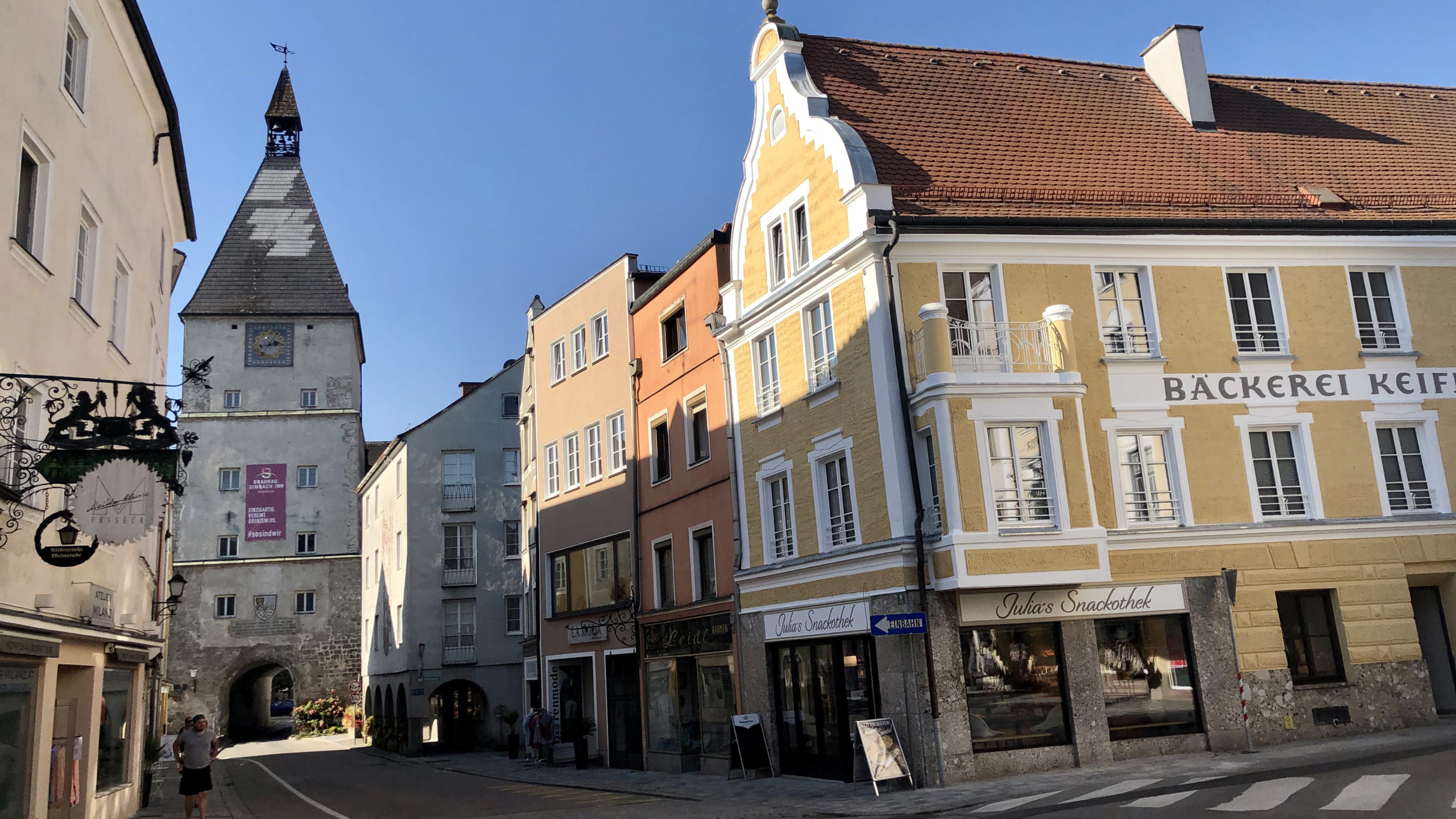
“I honestly would have expected a bit more from the Austrian government… it would have been wiser to leave this decision to the city government because we’re much closer to the situation,” said Hubert Esterbauer, the vice-mayor from the FPÖ. “We would have made a different decision, and definitely not the police.”
A former police officer himself, Esterbauer said he would have far preferred a social service that reflects the “character” of Austria: “If they want to renovate it, that’s okay, renovate it… but one could question whether it’s wise to have [the police] move in.”
Some also said the decision represents a step backward in a city that has worked hard to examine its own history and show it is an open, tolerant place. The city hosts an annual discussion and event series called the Braunau History Days, critically exploring the city’s past; it has made efforts to improve integration and provide safe spaces for minorities who often face discrimination elsewhere.
Ingo Engel, head of the Braunau City Association and an architect who served as the city planner for nearly two decades, is involved in organizing the Zeitgeschichte-Tage, or Braunau History Days. Once a year, the group brings together various experts and participants for a series of events and discussion about the city’s history. If the police do move in, Engel told me, he and others involved in exploring and showing Braunau’s history will fight to ensure that history is put on display somewhere in town, even if not at the house on Salzburger Vorstadt.
“In my view, what’s happening now with this project is very unsatisfactory,” he said. “We will be pushing hard for an additional facility that… in a short, concise form, documents this period in time.”
Others are less concerned. Lizeth Außerhuber-Camposeco, a member of the city council from the Greens, said she has no problem with the planned construction. While she, too, would prefer some sort of social service to move in, she said the building in its current form is “ugly” and detracts from the aesthetics of the old town. “We shouldn’t hide it, we shouldn’t deny it—that’s the way it is,” she said. “But we also don’t need to particularly protect the house or make something special out of it.”
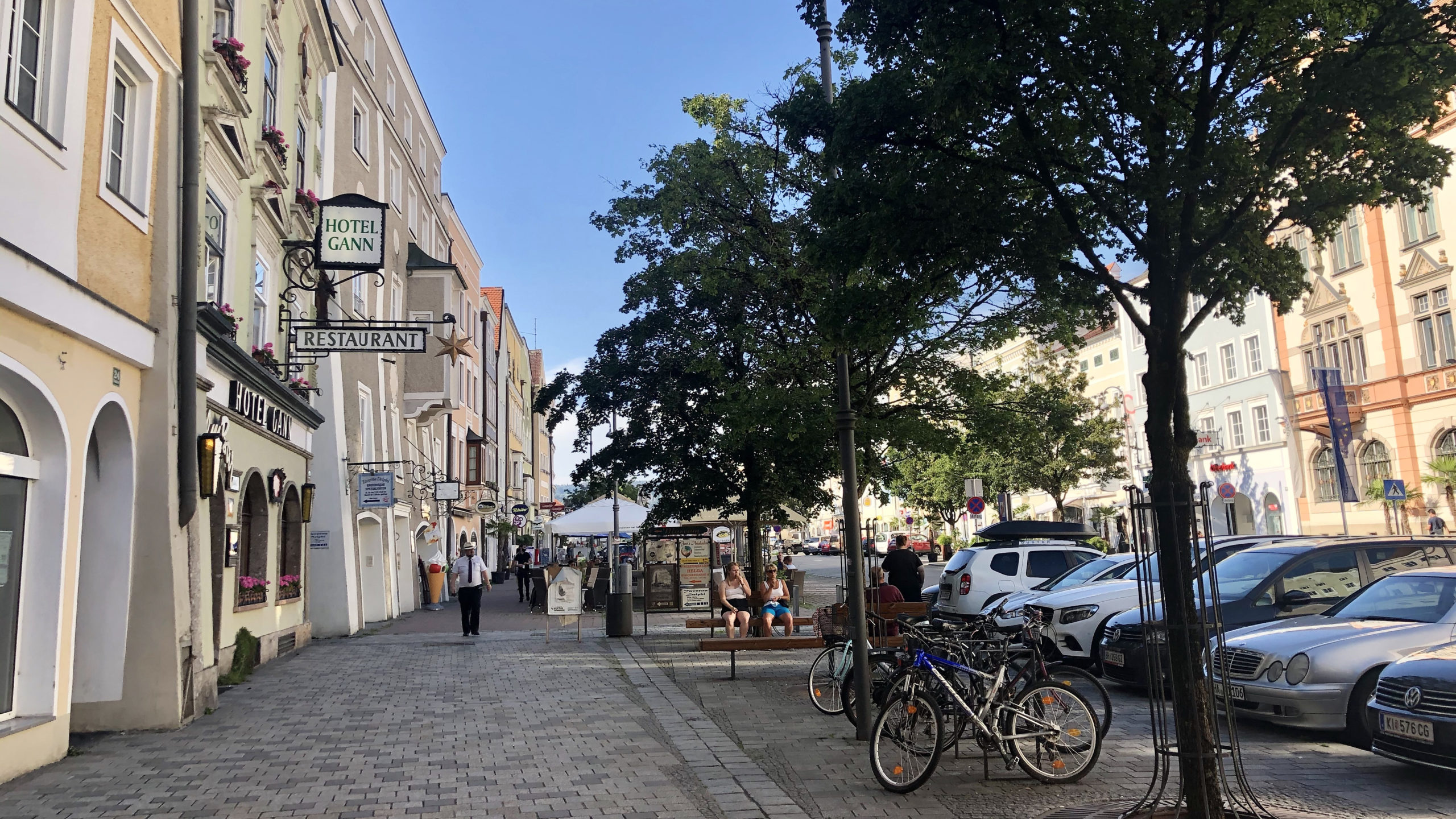
Still, Außerhuber, who also heads the city’s integration efforts, said other initiatives aimed at making the city open and tolerant—such as a rest space for Roma and Sinti to rent when they come through Braunau—have been obscured by the ongoing debates over the house’s future. “Although it’s a small city, there are many positive developments,” she said. “People also need to know that these things are happening.”
Still others argue for something bolder. Braunau requires a positive “reframing” of the house in order to move beyond its connection with Hitler, according to the Innsbruck-based historian Andreas Maislinger, who developed the “House of Responsibility” concept. Turning the house into a police station will only reinforce the stigma Braunau faces, he believes. By creating something new that gains an international reputation, he told me, the city would be able to turn its symbol into something positive.
“If the police move in, it will remain the ‘Hitler House,’ but if it becomes the House of Responsibility, people won’t say Hitler House anymore,” Maislinger said. “That’s perhaps the decisive factor overall: It would get a new name that’s communicated worldwide, one with positive associations and a clear definition.”
* * *
For now, the house still stands where it always has. Although the government unveiled the selected plans for renovation earlier this summer, it hasn’t given a start date for the construction, saying only that the works are expected to be completed in 2023.
Until the house’s future is fully settled, it will continue to be somewhat of an open wound in Braunau and for Austria—and keep attracting attention from far beyond the city’s limits. The day I was in town, a documentary filmmaking team happened to be around as well, working on a multi-year project about Braunau and the process of renovating the house.
Günther Schwaiger, the director, explained over coffee that as an Austrian, he’s interested in exploring the way national responsibility and guilt have evolved over the years—and how the unremarkable yellow house in Braunau has become a symbol for all of that. Having now written about memory culture in various European countries during my ICWA fellowship, I’ve learned how deeply complicated these issues are, and how sometimes a single place or issue can strike a nerve nationally. In Austria these days, that place is clearly the yellow house on Salzburger Vorstadt.
“The fact that Hitler was one of us—the country can’t deny it, can’t wish it away,” he told me. “This house is a reminder of that. If the house were one kilometer further, over the river [in Germany], we would have no problem in Austria. But it’s here.”

